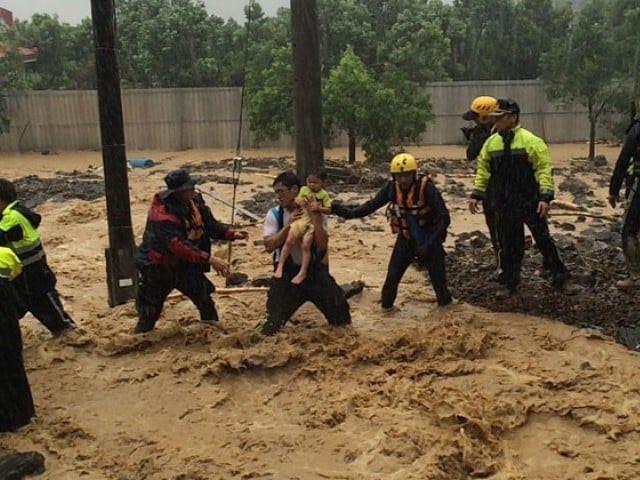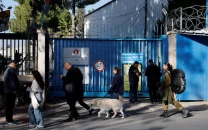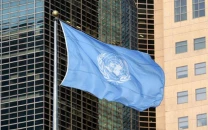Thousands evacuated as 'super typhoon' approaches Taiwan
Almost 3,000 people, most of them tourists, were evacuated with heavy rains and high tides forecast

This handout picture taken on August 8, 2015 and released on August 9, 2015 by the New Taipei City Fire Department shows rescue personnel moving an 8-year old girl to safety in Wulai, New Taipei City, as typhoon Soudelor hit Taiwan. PHOTO: AFP
Taiwan's weather bureau upgraded Dujuan to a "strong typhoon" -- it's top category -- on Sunday evening as the storm approached the island's east.
Other regional weather bureaus, including the Hong Kong Observatory, categorised it as a "super typhoon" as it intensified to reach gusts of 227 kilometres (141 miles) per hour.
Almost 3,000 people, most of them tourists, were evacuated from Taiwan's Green Island and Orchid Island -- popular with visitors -- with heavy rains and high tides forecast.
The typhoon is due to make landfall in eastern Taiwan on Monday night.
Read: Typhoon Soudelor kills 12 in China: state media
"It is not likely to weaken in any significant way before making landfall," a spokesman for the weather bureau told AFP.
More than 24,000 troops are on standby for disaster relief and evacuations from areas prone to landslides and flooding.
Emergency response centres have been set up in the north and east, where heavy rain is expected, as well as 100 shelters.
Dujuan was 500 kilometres off the coast of eastern Hualien County at 5:30 p.m. (0930 GMT).
The storm threatens long-weekend plans for many as Taiwan celebrates the Mid-Autumn Festival, also known as Moon Festival, when families typically gather and moon-gaze.
Dujuan is set to hit the Japanese island of Ishigaki at around midday on Monday.
The storm is on course to hit mainland China from Tuesday after moving through Taiwan.
Read: Typhoon lashes China after more than a million people evacuated
Japan's meteorological agency has warned it could trigger waves 13 metres (42 feet) high when it strikes the country.
So far there have been no reports of damage or injuries in connection with the typhoon, but "winds are getting stronger now", an Ishigaki official told AFP by phone.
At least three flights were cancelled, Japanese news reports and airline officials said, and the country's meteorological agency warned of possible landslides, high waves and heavy rain.
Typhoon Soudelor caused at least eight deaths in Taiwan last month as it flooded rivers, ripped up trees, and triggered landslides.
Toppled trees and signboards damaged electricity lines, knocking out power to a record 4.3 million households.
It went on to kill 21 people in China.



















COMMENTS
Comments are moderated and generally will be posted if they are on-topic and not abusive.
For more information, please see our Comments FAQ